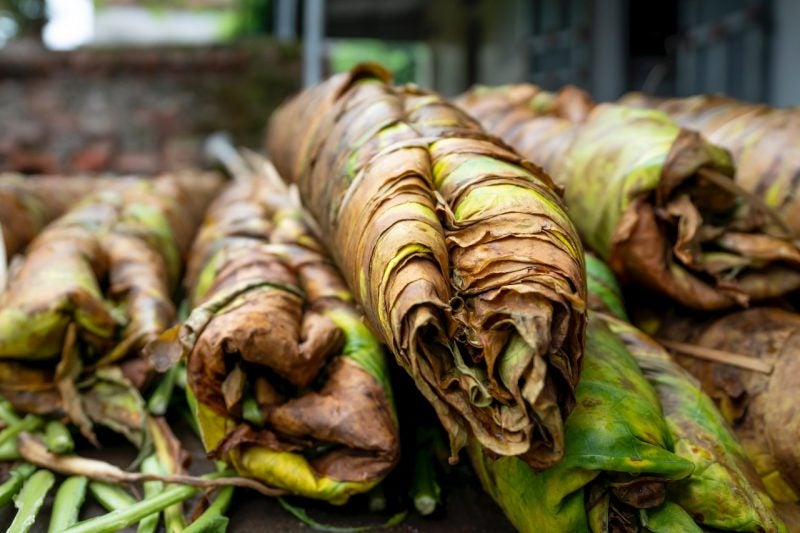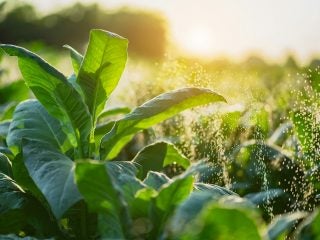Swiss Cuban Cigars is one of the most trusted sellers of authentic Cuban cigars online. Based in Gran Canaria, the online retailer is a big favourite with cigar lovers around the world.
Combating the spread of the availability of fake Cuban cigars online, Swiss Cuban Cigars prides itself not only on the vast range of the best Cuban cigars it sells, but also on its great customer service and fast worldwide shipping.
Buying Cuban cigars online
Cuban cigars are immensely popular, and as with all popular products, the risk of fake Cuban cigars is out there. Customers looking for Cuban cigars should always ensure that all the cigars are in their original sealed boxes, and carry the green seal that denotes authenticity.
The Cuban tobacco growing regions that guarantee high quality cigars are found in the Vuelta Abajo region. This represents the tobacco growing heartland of South America, and is the origin of the tobacco used in all Havana Cuban cigars, whether Rome y Julieta or any other key brand.
Helping customers avoid fake Cuban cigars
As well as stocking very high quality cigars and offering customers easy and secure payments, Swiss Cuban Cigars regularly reviews popular cigars as part of its service. This helps customers to find cigars that suit their purposes and, of course, to avoid fake products.
Swiss Cuban Cigars customer service team also ensures it’s on top of any news that impacts the market. Here’s what the Swiss Cuban team thinks of the impact of Hurricane Ian on the key tobacco growing regions.
Hurricane Ian devastated parts of Cuba
Hurricane Ian was the Category Three hurricane that slammed across Cuba, Florida and South Carolina in September this year.
The hurricane made repeated landfalls at different points, causing immense damage to businesses and residents.
And in Cuba, Hurricane Ian ripped through key tobacco growing regions. The hurricane reached Cuba with winds of around 200km/hr (124mph) and devastated the Pinar del Rio region in particular.
Key tobacco growing region for Cuban cigars
Pinar del Rio is in the western part of Cuba and is home to some of the most select cultivation of tobacco in the country.
The region produces the largest selection of tobacco in Cuba, but also the highest quality of tobacco. This tobacco is key to making the great cigars that Cuba is famous for. The ability to produce exact boxes of the highest quality cigars is what sets Havana apart.
All the most loved and most popular cigars, whether the Montecristo brand or Romeo y Julieta offer cigar lovers the best flavor profile and finest smoking experience precisely because they are made using tobacco from this region.
Massive damage to infrastructure across the country
Reports following the landfall of Hurricane Ian show that there has been massive damage to infrastructure in the region. This, along with the loss of thousands of tonnes of raw tobacco leaves adds up to a big problem for the market.
For example, a report published by Granma, the official Cuban newspaper, said that the hurricane has caused “massive damage both in the amount and the quality of the crop that contributes hundreds of millions of dollars for exports each year.”
According to the report, the most damage caused by the hurricane can be seen in San Juan y Martinez and San Luis. These regions house the raw material used to create boxes of the famous Cuban cigars.
Cuban cigars are one of the most important exports from Cuba, which has undergone tough economic conditions for decades.
And the damage caused by the meteorological event has been dubbed “the biggest blow that the tobacco infrastructure has suffered throughout its history by Victor Fidel Hernandez, the Agriculture minister in Pinar del Rio.
Worst hurricane damage in recent history
It’s not the first hurricane that has caused damage in Cuba, of course. In 2002, there were two major hurricanes (Lili and Isidore) that damaged the region. However, Hurricane Ian has caused more devastation.
Within this major tobacco growing region of Cuba, there are approximately 12,000 natural cure centres for drying out the leaves. It’s estimated that the hurricane has damaged about 90% of these curing centres.
Furthermore, it’s estimated that about 11,000 tonnes of tobacco has been soaked by the hurricane. This was from the last tobacco harvest and was stored in these curing centres. Work since the hurricane has been focused on salvaging as much as possible.
Strategies for rebuilding the sector
Authorities have been creating new strategies for the next harvest (2022/2023), which begins on 20 October. They have to factor in lots of problems caused by the hurricane, such as the fact that most seedbeds that provide the seedlings they need, have been completely destroyed.
Where does it leave the tobacco sector? According to Marino Murillo, the president of the Tobacco business group in Cuba, there is a clear priority – to extract as much tobacco as possible. There are about 41,000 tonnes of tobacco in Cuba, and according to reports, 33,000 tonnes are in this region (Pinar del Rio).
In a press release from the Prensa Latina news agency, Mr Murillo said that approximately 17,000 tonnes of tobacco will be moved to other provinces. In addition, the seedbed irrigation will restart as a matter of urgency.
Proactive approach to saving as much of the crop as possible
Tobacco workers throughout Pinar del Rio took as much preventative action as possible before the hurricane hit Cuba. According to the authorities, they managed to preserve 650 tonnes of tobacco set aside for the manufacture of Cubans.
They’re also working towards recycling as much raw material that remains in decent conditions. Furthermore they will define and designate new areas for plantations in the region, with the aim of planting 15,000 hectares of new tobacco plants throughout Cuba.
Tobacco market was already struggling prior to the hurricane
It’s worth noting, when analysing the state of the Cuban tobacco sector, that the hurricane has hit at an already difficult time for the market. Between January and June 2022, the crop of tobacco was already reduced by around 50% due to logistical problems, supply chain issues and a lack of basic supplies.
This had already caused instability throughout the manufacture and distribution of Cuban cigars. Tobacco represents the fourth largest sector in terms of income generation in Cuba. As we’ve just touched on, over recent years, the harvest yield was already falling. For example, in 2017 the tobacco harvest was at 32,000 tonnes. By 2020 this had fallen to 25,800 tonnes.
In terms of employees, the tobacco growing sector keeps about 200,000 people in a job – a figure that rises to about 250,000 during harvest.
The Vuelta Abajo region grows tobacco for Cubans
Three municipalities in the Vuelta Abajo region within the province of Pilar del Rio is not only the biggest tobacco growing region in Cuba, but also the worst hit by the hurricane.
Maritza Carpio heads up a tobacco farm in the region, and has told AFP that the catastrophe facing Cuban tobacco farmers is the biggest yet. Given that the hurricane came on the back of COVID-19 and the impact of the pandemic forcing the industry to grind to a halt, it’s not difficult to understand the toll that this now takes.
To further underscore the bad timing of the weather system, September is just about the worst time a hurricane could hit Cuba. This is because the tobacco planting season begins towards the end of October.
Damage caused by the hurricane include the curing centres and the crop fields that were being prepared for planting new tobacco. With fields already ploughed and ready, the hurricane effectively stopped the cycle short.
More than two-thirds of Cuban tobacco is produced in Pilar del Rio. But when it comes to Cuban cigars, the choice tobacco is grown in Vuelta Abajo. This is the only part of Cuba that grows all three types of tobacco that is used to make Cubans.
Last year, according to Habanos SA, the country exported US$568 million worth of Cuban cigars. This represented a 15% increase from 2020. However, given that warehouses, storage centres, drying houses and offices were destroyed by Hurricane Ian, it’s unclear what kind of numbers the sector will export this year.
Counting the cost of the hurricane damage
Reports show that the hurricane hammered the Pinar del Rio region for around six hours during the first landfall. More than 50,000 people were evacuated in order to keep them safe, and the initial death toll stood at three people.
As well as the damage done to the tobacco sector, the grid was knocked out which meant that Cuba underwent a total blackout for 18 hours.
While power was restored in much of the country after that, in the west of Cuba the lights were still out after two days.
As well as the economic devastation, there is also an emotional and sentimental cost of the damage done by Hurricane Ian.
Shortly after the hurricane departed, President Diaz-Canel visited the region, saying on Twitter: “There is great damage, even though we haven’t yet been able to evaluate it.”
Rebuilding the tobacco growing regions for future harvests
As the region begins to rebuild the tobacco harvests, it will be interesting to see how this impacts customer’s ability to buy Cuban cigars over the next few years.
Swiss Cuban Cigars will continue to guard against the scourge of fake cigars, which may become more common than ever if the market struggles to provide the normal number of authentic cigars.
The team at Swiss Cuban customer service team ensure that every purchase results in cigars in their original sealed box. Secure payments and fast delivery also reinforce the buying experience for customers, who regularly cite the excellent service when they write reviews.
Swiss Cuban Cigars will continue to monitor the tobacco market in Cuba and assess how it will impact the market in the future.












